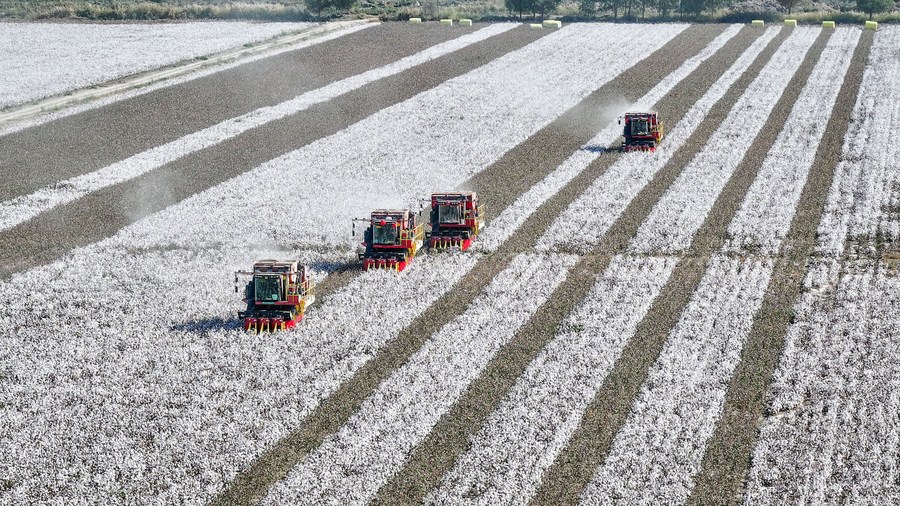An Inspiring Transition

Once riddled with conflict, China’s Xinjiang region now is a land of growth and stability.
Xinjiang has undergone significant changes in recent years. Government efforts to create a peaceful environment are visibly yielding results. Once rife with conflict, the region now enjoys stability and growth. A sense of calm and safety is evident on its streets, which are now brimming with commerce and culture.
A white paper on the fight against terrorism and extremism and human rights protection in Xinjiang, issued by the State Council Information Office in 2019, affirmed that the region has maintained social stability and lasting security. This achievement is the result of meticulous planning and proactive measures to address challenges before they arise.
Ensuring people’s well-being across all aspects of life is a cornerstone of human rights in China. This encompasses economic growth, social services, and education. Another white paper noted that by the end of 2020, Xinjiang had lifted over 3 million people out of poverty. This underscores the government’s commitment to development, ensuring that everyone benefits and fully enjoys their rights.
Education has played a pivotal role in this transformation. Government programmes have provided equal opportunities and promoted unity among Xinjiang’s diverse communities. These initiatives not only build skills but also foster a shared sense of purpose. Education is central to Xinjiang’s growth strategy, aligning with China’s broader goals of prosperity and stability.
Xinjiang is also a key part of the Belt and Road Initiative, linking China with Central Asia. This integration has revitalised the local economy, positioning Xinjiang as a vital hub for trade, connectivity, and development.
Economic development
Xinjiang’s economy has undergone dramatic changes, with rapid growth across various industries. The region is emerging as a leader in textiles, agriculture, and renewable energy.
The textile industry, for instance, saw significant growth in exports in 2023, driven by innovations like AI and 5G. Xinjiang’s textile sector embraces advanced manufacturing processes with minimal human involvement and high levels of automation. Fashionating World, a fashion and textile industry news provider, reported, “Xinjiang’s textile exports have defied challenges, showing significant growth.”

Xinjiang’s agricultural transformation is particularly fascinating. It is another pillar of Xinjiang’s economy that has seen remarkable modernisation through mechanisation. Advanced technology has revolutionised cotton farming in the region, China’s largest cotton-growing area. With a mechanisation rate exceeding 80 percent, the sector has achieved significant gains in productivity and efficiency, making the process faster, more sustainable, and highly effective.
Xinjiang is also making strides in sustainability, becoming a hub for solar and wind power. According to State Grid Xinjiang Electric Power, by the end of 2023, clean electricity transmitted from Xinjiang to other regions amounted to 210 billion kwh since the transmission programme began in November 2010. In the first half of 2024 alone, newly installed capacity for renewable energy grew by 103 percent year on year, according to local authorities.
False perceptions
Despite these achievements, Xinjiang faces international scrutiny and sanctions that affect its economic prospects. Sanctions have led to a significant drop in Xinjiang’s exports, Xinhua News Agency reported. This has also impacted local incomes.
Negative propaganda in international media contributes to mixed global perceptions of Xinjiang. While some criticize China’s approach, others recognise the improvements in security and economic conditions. The reality is complex, shaped by both local progress and global politics. The region’s progress in restoring security and fostering economic growth has, in some quarters, been perceived as a threat. This perception has led to tensions and accusations, particularly concerning human rights.
However, a visit to Xinjiang reveals the region’s remarkable resilience and capacity for self-transformation. This transition is not only admirable but also a valuable case study in achieving stability, growth, and social harmony in the modern world. As it develops further, it will provide valuable learning in contemporary governance and development. It is working towards a future where everyone can live in safety and prosperity.
Seeing Xinjiang’s development up close tells a powerful story of growth and change. The region is working hard to boost its economy, preserve its unique culture and strengthen social unity to create the conditions for a hopeful future. Progress in infrastructure and industry, as well as efforts to address social issues, highlight the positive outcomes of its transformation.
Xinjiang’s journey is a testament to the power of strategic governance and offers a glimpse of a bright future for its people.
 Facebook
Facebook
 Twitter
Twitter
 Linkedin
Linkedin
 Google +
Google +










